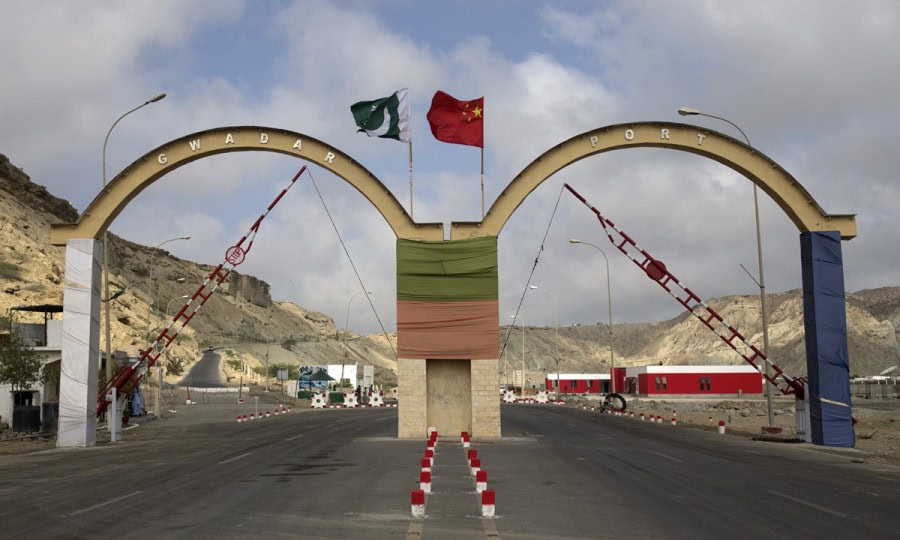ISLAMABAD – Pakistan has undoubtedly great opportunity and promises with a unique potential to become the regional hub of economic activity due to its strategic geopolitical location at the crossroads of South Asia and Central Asia.
This was stated by the Asian Development Bank (ADB) said in a study titled “Economic Corridor Development in Pakistan: Concept, Framework, and Case Studies” released on Wednesday, adding that Pakistan could address its challenge by following the model economic corridor development (ECD).
The study highlighted that despite its immense potential, Pakistan has not yet been able to attain a sustained growth path to move beyond its historic lackluster and stop-and-go pattern, characterized by “booms and busts” every 3 to 4 years.
“This growth cycle stems from nascent private sector development, which is evident from the fact that the services sector’s share, mostly non-tradable, dominates gross domestic product (GDP). The manufacturing sector share has been approximately 13% of GDP compared with a 30% average for comparable economies,” it said.
Many Asian developing countries that have successfully transformed their economies from lowincome to middle- and high-income status have relied on exports as the main growth engine.
“Through market reforms, Pakistan needs to transform its economy into an export-led growth trajectory. In addition to improving the economy’s competitiveness and productivity with a vibrant private sector, it is critical to attracting domestic and foreign investments to support this transformation,” said the report.
It said that the country has already begun applying its potential by adopting and implementing an economic corridor development (ECD) strategy as part of its core development and growth framework.
“ECD can be one of the most credible ways to help the government achieve its socio-economic objectives of reaching the upper-middle-income status by 2025,” Zhukov said
- Although ECD is anecessary condition, it is not sufficient for transforming the economy to export-led growth, private sector development and a fair and efficient tax system are indispensable as well.
By enhancing domestic connectivity and linking lagging regions (including secondary cities) with urban growth centers, ECD can help Pakistan become a hub of economic activity for Central, South, and West Asian countries. It can maximize the benefits of the international linkage between the China–Pakistan Economic Corridor (CPEC) and the Central Asia Regional Economic Cooperation (CAREC) programs and their routes.
Potential Transport Corridors for ECD
The Asian Development Bank and the former Department for International Development of the United Kingdom selected the following four transport corridors in Pakistan as a pilot for operationalizing ECD:
(i) Motorway M4 linking Faisalabad (Punjab) and Multan (Punjab) in Central Punjab;
(ii) National highway N70 connecting Multan (Punjab) and Killa Saifullah (Balochistan);
(iii) National highway N50 linking Dera Ismail Khan (Khyber Pakhtunkhwa [KPK]) and Kachlak (Balochistan); and
(iv) Expressway E35 from Islamabad to Mansehra (KPK), which will likely be extended to the People’s Republic of China (PRC) and Central Asia in the future.
The ADB study proposes the following recommendations:
(i) Duly empower a central corridor planning and development agency to oversee the overall development and management of ECD.
(ii) Strengthen the overall policy framework for ECD, focusing on streamlining transport and logistics policies, public–private partnerships, land-use and zoning regulations, and business regulatory and taxation regimes.
(iii) Provide institutional support for skills development to align labor force skills with industry needs.
(iv) Develop a strategy for synchronizing urbanization and industrialization, along with other major economic initiatives to link existing industrial clusters and urban areas with new Economic Corridor Development Potentials in Pakistan 63 industrial hubs and urban centers through infrastructure networks, the most important being transportation. Such a strategy will enable the effective use of capital, human resources, and infrastructure in existing settlements to build new centers.
CPEB Benefits
The study also discussed about CPEC and said that it could pull off a number of economic objectives if it was implemented successfully.
However, it cautioned that CPEC alone could not improve the economy and would need to be supported by structural reforms to unleash its true potential.










